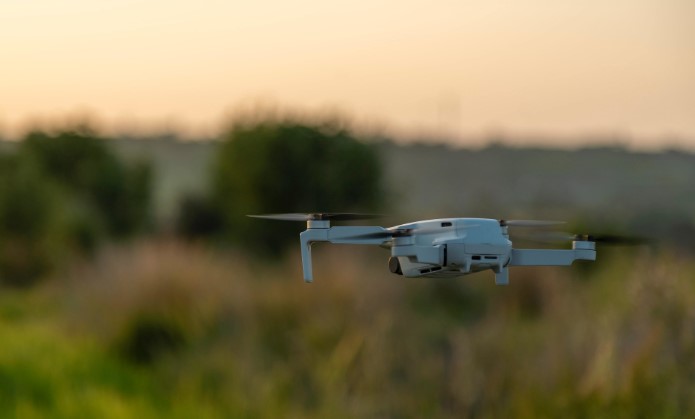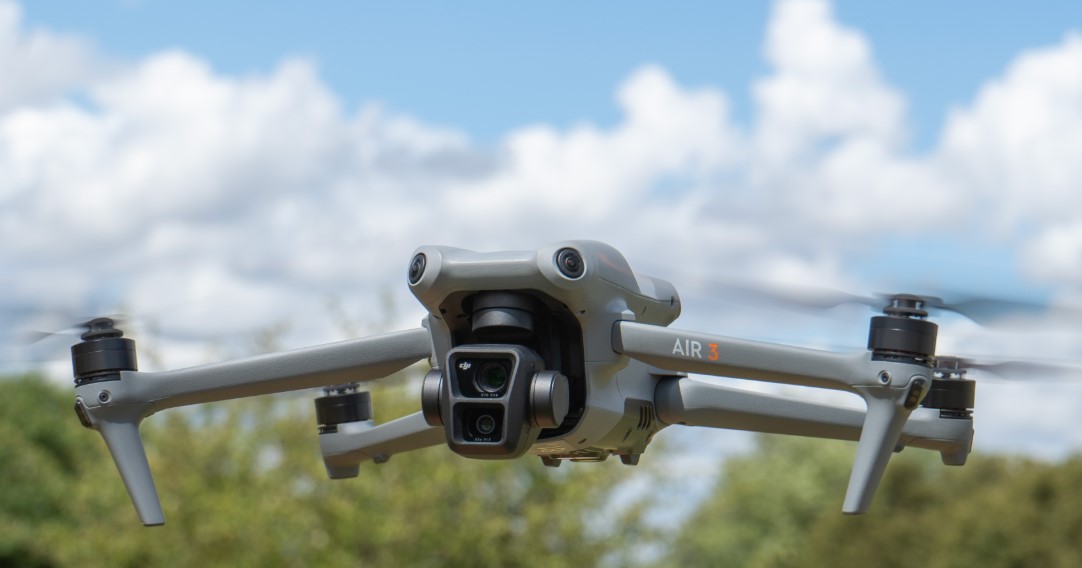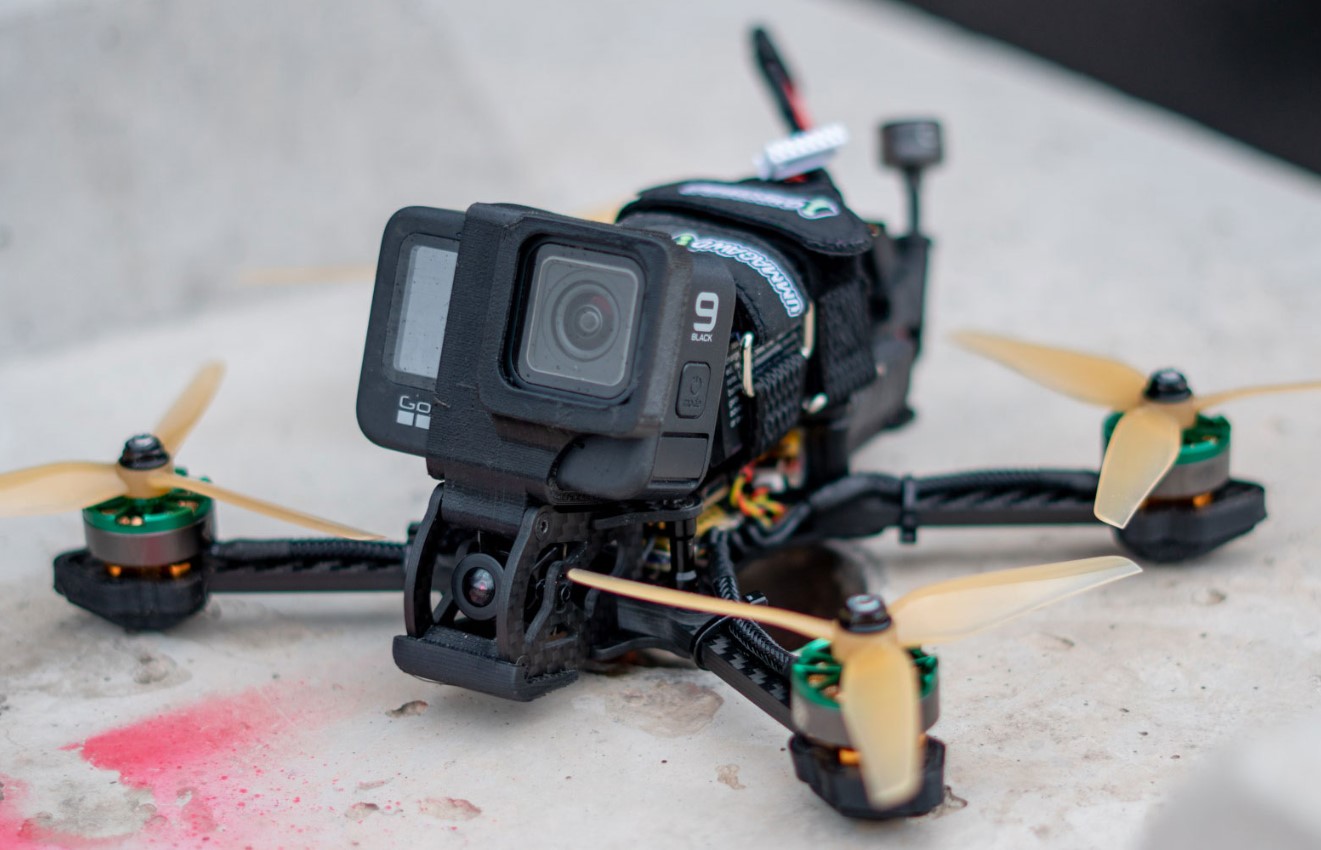Drone fishing has gained immense popularity in recent years, blending technology and traditional angling methods to revolutionize fishing. One critical question for anglers venturing into this domain is: how much line for drone fishing? This question isn’t just about convenience; it’s essential for maximizing success and ensuring safety for both your drone and fishing gear. Follow Dronevoz.com !!!
In this guide, we’ll explore the factors affecting the required line length, the types of fishing lines to consider, and expert tips to optimize your drone fishing experience.
What Is Drone Fishing?
Drone fishing combines modern technology with traditional angling techniques. Using a drone equipped with a bait release mechanism, anglers can deploy bait and tackle into precise fishing zones far beyond the shoreline. This method is particularly advantageous for surf fishing, deep-sea fishing, and targeting species that inhabit offshore areas.
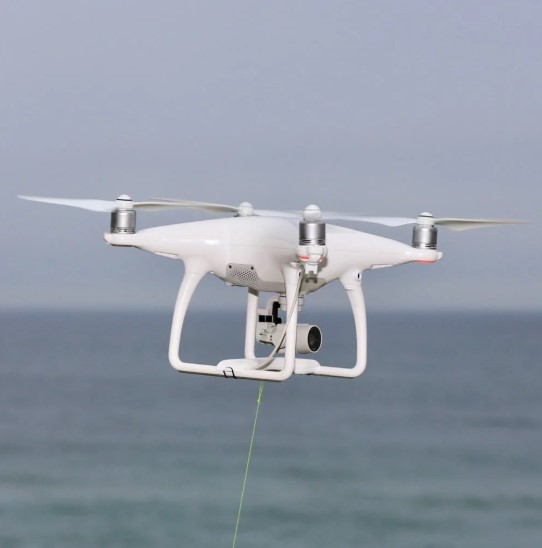
Factors That Determine the Required Line Length for Drone Fishing
Distance to the Fishing Zone
The primary factor influencing how much line you’ll need is the distance you plan to deploy your bait. Drones can typically carry bait between 300 and 1,000 meters (328 to 1,094 yards) offshore. To ensure smooth operation:
- Beginner anglers might target distances of up to 300 meters.
- Experienced anglers with advanced drones may aim for distances exceeding 500 meters.
For optimal performance, your fishing line should be at least 1.5 times the drone’s maximum range. For example, if your drone can fly 500 meters, your fishing line should be around 750 meters long.
Target Species and Water Depth
The species you’re targeting and their habitat depth play a significant role in determining line length. Larger fish like tuna, marlin, or sharks may require deeper water and a longer line.
- Shallow-water species: 300–500 meters of line is often sufficient.
- Deep-water species: 800 meters or more may be needed to account for distance and depth.
Line Stretch and Resistance
Fishing lines can experience tension and resistance during deployment and when reeling in fish. To prevent line breakage:
- Use braided fishing lines, which are stronger and less prone to stretching.
- Ensure your reel has enough capacity to hold the required length without compromising on line strength.
Drone Capability and Payload
The drone’s payload capacity determines how much weight it can carry, including bait, tackle, and line.
- Light-duty drones: Best suited for short distances (200–300 meters).
- Heavy-duty drones: Can handle longer distances (500 meters or more) and heavier setups.
Environmental Conditions
Wind speed, currents, and tides can impact how much line you’ll need. Strong winds and currents may require additional line length to ensure proper bait placement.
>>> Read: Is Drone Delivery Legal In Australia?
Recommended Fishing Line Lengths for Drone Fishing
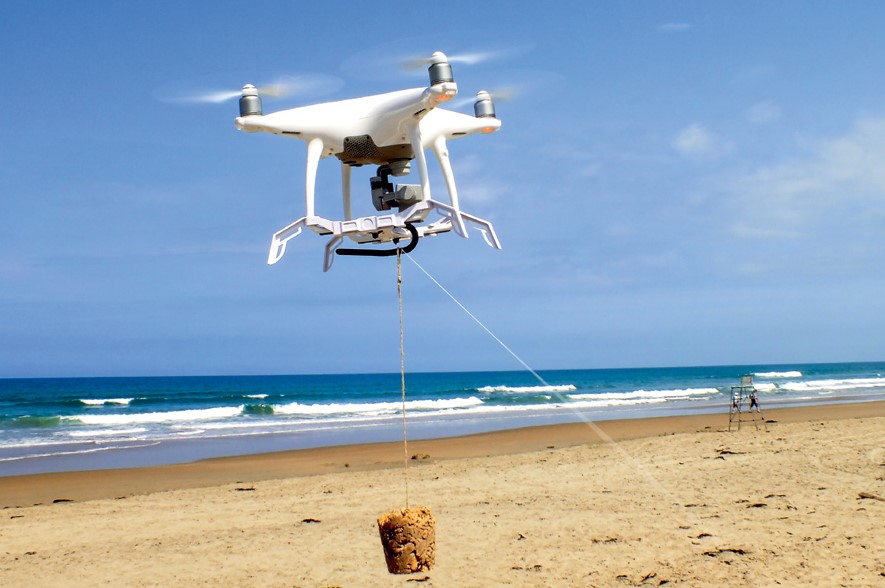
- Surf Fishing with Drones
For anglers fishing off a beach or rocky shoreline, 300–600 meters of line is typically sufficient. This allows you to cast beyond the breaking waves, where many fish species gather.
- Deep-Sea Drone Fishing
When targeting pelagic species in deeper waters, plan for 800–1,000 meters of line. This ensures you can reach the desired fishing zone and retrieve your catch safely.
- General Drone Fishing
If you’re unsure of your fishing environment, a versatile setup with 500–800 meters of line provides flexibility.
Step-by-Step Guide to Determining Line Length
- Estimate Flight Distance: Measure the maximum range you plan to fly your drone. This is the minimum line length required.
- Account for Depth: Add extra line to account for water depth if bottom fishing.
- Add a Buffer: Always include an additional 50-100 meters as a safety margin for unexpected scenarios like currents or tangling.
- Consider Drone Limitations: Ensure the total weight of the line and tackle does not exceed your drone’s payload capacity.
Example Calculation:
- Planned flight distance: 400 meters
- Water depth: 50 meters
- Buffer: 100 meters
Total Line Length Needed: 550 meters
Choosing the Right Fishing Line for Drone Fishing
Not all fishing lines are created equal. Here are key factors to consider when selecting your fishing line:
Material
- Braided lines: Highly recommended for drone fishing due to their strength, minimal stretch, and thinner diameter.
- Monofilament lines: Less ideal as they tend to stretch, which can affect bait placement accuracy.
Line Strength
Choose a line with a high pound-test rating to handle the combined stress of bait deployment, fish strikes, and retrieval. Common recommendations include:
- 50–80 lb for medium-sized fish.
- 100 lb or more for large species like sharks or tuna.
Line Diameter
A thinner line reduces air resistance during deployment and allows you to fit more line onto your reel.
Tips for Drone Fishing Success
- Check Your Drone’s Battery Life
Always ensure your drone has enough battery life to complete a round trip. A fully charged drone can usually operate for 20–30 minutes, which is adequate for most fishing trips.
- Use a High-Capacity Reel
A large reel with a high line capacity is essential. Look for models designed for deep-sea or offshore fishing.
- Practice Line Management
Properly spool and organize your fishing line to prevent tangles during deployment.
- Account for Safety
Never exceed your drone’s payload capacity, as this could result in accidents or damage.
Popular Drone Fishing Setups
- Entry-Level Setup
- Drone: DJI Phantom series or similar.
- Line Length: 300–500 meters.
- Line Type: 50 lb braided line.
- Intermediate Setup
- Drone: SwellPro SplashDrone or similar.
- Line Length: 500–800 meters.
- Line Type: 80 lb braided line.
- Advanced Setup
- Drone: Custom heavy-duty fishing drones like the Gannet Pro+ or Cuta-Copter.
- Line Length: 800–1,000 meters.
- Line Type: 100 lb or more braided line.
Conclusion
Drone fishing has revolutionized the way anglers reach remote fishing zones, but success depends heavily on the right setup. The amount of fishing line you need for drone fishing varies based on factors such as target distance, fish species, and environmental conditions. A general rule of thumb is to have at least 1.5 times the drone’s range in fishing line, with additional length for deep-water or challenging conditions.
By understanding the requirements of your fishing scenario and investing in high-quality equipment, you can maximize your chances of a successful and enjoyable drone fishing experience.
FAQs
- Can I use monofilament lines for drone fishing?
While possible, monofilament lines are not ideal due to their tendency to stretch and lower strength compared to braided lines.
- How do I prevent my line from tangling during deployment?
Ensure your reel is properly spooled, and keep tension on the line during deployment. Using a line winder or guide can help.
- Is there a weight limit for the line I use?
Yes, the line weight and payload should not exceed the drone’s capacity. Always check your drone’s specifications.
By following these guidelines, you’ll be well-prepared to enjoy the exciting and rewarding sport of drone fishing!
>>> Click Swellpro fishing drone review: Features, performance, benefits
